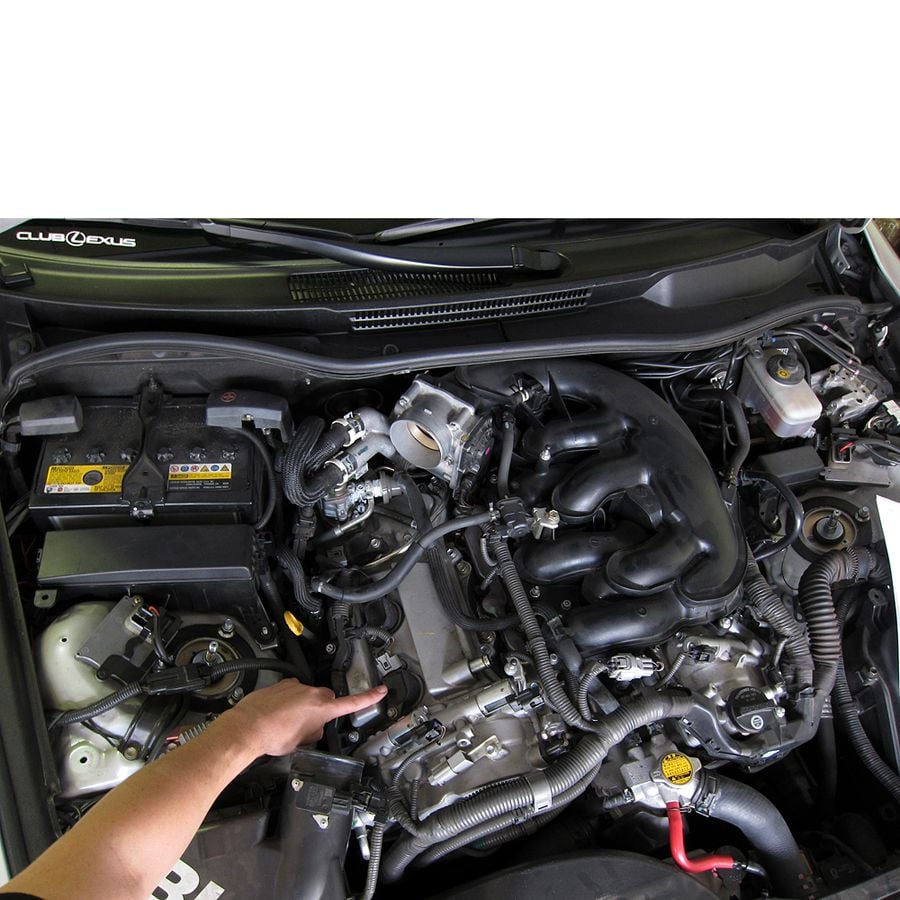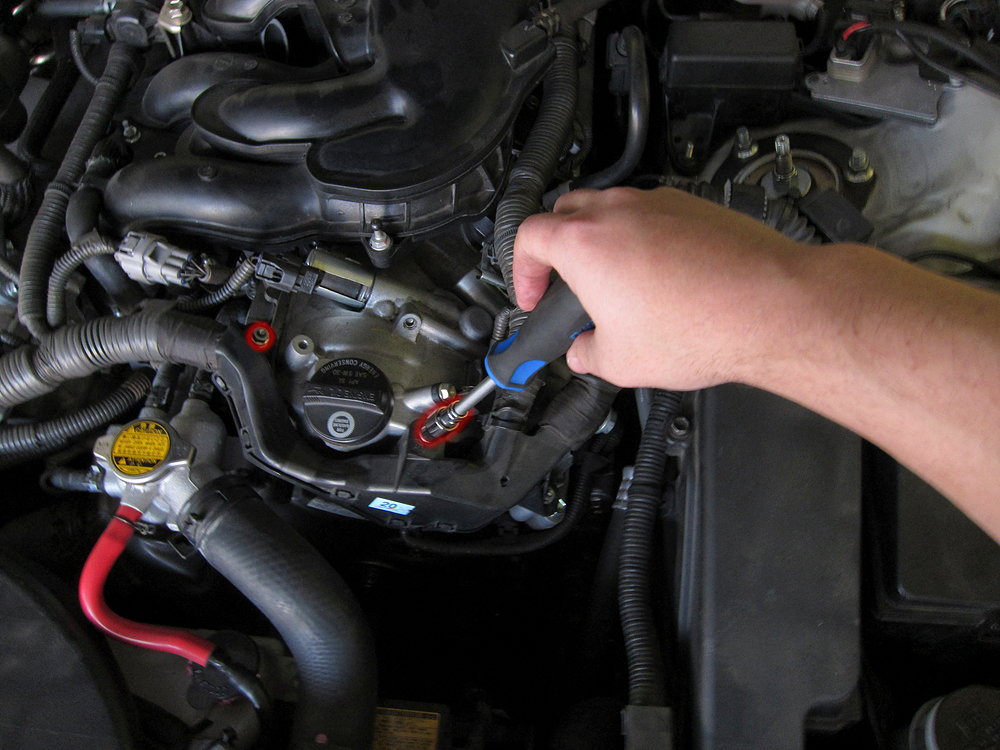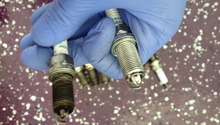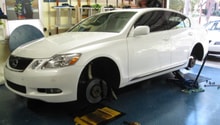Lexus IS: How to Replace Spark Plugs
Fouled or worn out spark plugs are one of the first things you should check for if you're having misfires or other performance issues. With our guide, pulling your spark plugs and identifying problems is easy.
This article applies to Lexus IS 250/IS 350 (2005-2014).
A rough idle, misfires, and a sluggish throttle response are symptoms of a bad or dying spark plug. They're one of the few engine components that are exposed to combustion, so they're pretty rugged. Still, Lexus recommends you change them every 60K miles. However, they can fail earlier and trigger a check engine light. Luckily, changing the plugs yourself isn't difficult.

Materials Needed
- New spark plugs
- 10mm socket with extensions
- Spark plug socket tool or a 16mm deep socket or 5/8 deep socket
- Torque wrench
- Flat head screw driver (for prying)
- Ratcheting wrench or box wrench
Step 1 - Remove engine covers and air intake assembly
Pop off the panels and remove the air intake assembly. You can see that the ignition coil is now easily exposed.

Figure 1. Remove this intake tube according to diagram 
Figure 2. The finger in this image points to an ignition coil. Underneath it is a spark plug.
Step 2 - Loosen ignition coil harness
Using a small socket or wrench, loosen the 10mm nuts holding the harness in place.

Step 3 - Remove fastening nuts from ignition coils and unclip coils
Remove the 10mm nuts holding the ignition coils in place. Save the nuts and set aside on a magnetic tray or a cup.

Figure 4. Remove the ignition coil bolt from the coil pack. 
Figure 5. Unclip the ignition coil from the wiring harness.
Step 4 - Remove old spark plug
The old spark plug will now be exposed. Use the spark plug tool with an extension to remove the old plug.

Figure 6. The spark plug sits deep in the engine. You'll need an extended socket to reach it. 
Figure 7. Fit the extension and socket on the spark plug loosely before wrenching.
Pro Tip
Now that your have your spark plug out, you can check its condition to see if your engine is having problems. A spark plug can tell you a lot about what's happening in your combustion chamber if you know how to read it. Compare your plugs to ones on this chart. If your engine is running poorly, this will help you figure out why.

Step 5 - Install new spark plug
Using the spark plug tool and the extension, guide the new plug into the hole and thread loosely. See figure 6 above.
Pro Tip
You can apply a small amount of motor oil to the threads of the new spark plug to avoid cross threading.
Step 6 - Torque down the spark plug
Using the torque wrench, set it to 18 ft-lb and tighten.

Step 7 - Remove ignition harness on driver's side
Navigate to the driver's side and remove the two nuts shown in figure 10. After they've been removed, life the harness up and off to the side. Save and set the nuts aside.

Step 8 - Replace spark plugs on driver's side
Repeat steps 3-6 on the driver's side of the engine. Don't forget to torque new plugs down!

Pro Tip
Since the driver's side of the engine is a much tighter fit, a box wrench or ratcheting wrench will be the most useful here.
Step 9 - Re-install nuts, air intake assembly, and engine covers
Re-install the fastening nuts for the ignition coils and the harnesses. You should also re-install the air intake assembly and engine covers at this time.
Featured Video: How to Change Spark Plugs
Related Discussion and Site
- DIY Spark Plug Service - ClubLexus.com
- Spark Plug Library - AA1Car.com






